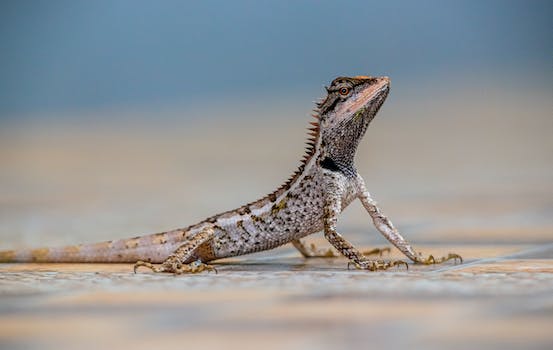

-
Table of Contents
Unleash the Nutty Delight!
Introduction
The Woodpecker's Stash of Acorns is a fascinating phenomenon observed in certain species of woodpeckers. These birds have a unique behavior of storing acorns in tree trunks or other crevices for future consumption. This behavior serves as a survival strategy, ensuring a steady food supply during times of scarcity. The woodpecker's ability to remember the exact locations of their hidden acorns is truly remarkable, allowing them to retrieve their stash when needed. This behavior showcases the resourcefulness and adaptability of these avian creatures.
The Importance of Acorn Storage for Woodpeckers
Woodpeckers are fascinating birds known for their unique behavior and adaptations. One of the most intriguing aspects of their lifestyle is their habit of storing acorns. Acorns are an essential food source for woodpeckers, and their ability to store and retrieve them is crucial for their survival.
Acorns, the fruit of oak trees, are rich in nutrients and provide a reliable source of food for woodpeckers. These birds have a specialized beak that allows them to drill into trees and extract insects, but they also have a keen sense for finding and collecting acorns. Woodpeckers use their strong beaks to pry open the hard outer shell of the acorn and access the nutritious kernel inside.
However, acorns are not always readily available throughout the year. Oak trees produce acorns in abundance during certain seasons, but the supply can be scarce during other times. This is where the woodpecker's storage behavior becomes crucial. By collecting and storing acorns during times of plenty, woodpeckers ensure a steady food supply during leaner periods.
Woodpeckers have various strategies for storing acorns. Some species, like the acorn woodpecker, are highly social and live in large groups. These woodpeckers create communal storage areas known as "granaries." They drill holes into trees, fence posts, or even buildings, and carefully place individual acorns into each hole. These granaries can contain thousands of acorns, providing a shared food source for the entire group.
Other woodpecker species, like the red-headed woodpecker, prefer to store acorns individually. They often hide them in crevices or under bark, carefully concealing their stash from potential thieves. These individual storage sites are scattered throughout the woodpecker's territory, ensuring that they have access to food wherever they go.
The ability to remember the location of each stored acorn is crucial for woodpeckers. They have excellent spatial memory and can recall the exact hiding spots of their acorns, even months later. This remarkable memory allows them to retrieve their stored food efficiently, even when the landscape has changed or is covered in snow.
The importance of acorn storage for woodpeckers extends beyond their own survival. By storing acorns, woodpeckers inadvertently contribute to the dispersal and germination of oak trees. When they fail to retrieve all of their stored acorns, some of them are left behind and can sprout into new oak trees. This process helps maintain the oak tree population and supports the ecosystem as a whole.
In conclusion, the woodpecker's habit of storing acorns is a vital adaptation that ensures their survival and contributes to the ecosystem. Acorns provide woodpeckers with a reliable food source, and their ability to store and retrieve them during times of scarcity is crucial. Whether through communal granaries or individual hiding spots, woodpeckers demonstrate remarkable memory and resourcefulness. Furthermore, their storage behavior inadvertently aids in the dispersal and germination of oak trees, benefiting the entire ecosystem. The woodpecker's stash of acorns is a testament to their remarkable adaptations and their important role in nature.
How Woodpeckers Locate and Store Acorns

Woodpeckers are fascinating birds known for their unique behavior of drilling holes in trees. While many people are familiar with their drumming sounds and ability to excavate nests, one lesser-known aspect of their behavior is their knack for locating and storing acorns. In this article, we will explore how woodpeckers find and stash acorns, shedding light on their remarkable foraging strategies.
Woodpeckers have a keen sense of hearing, which plays a crucial role in their ability to locate acorns. They can detect the sound of an acorn falling from a tree from a considerable distance away. This remarkable auditory ability allows them to pinpoint the exact location of the fallen acorn, even amidst the rustling leaves and other background noises. Once they have located an acorn, woodpeckers use their strong beaks to extract it from the ground or leaf litter.
After finding an acorn, woodpeckers have a unique way of storing them. Unlike squirrels, who bury acorns individually in various locations, woodpeckers prefer to create a centralized stash. They often choose a dead tree or a dead branch as their storage site. The woodpecker will then drill a series of small holes, known as "granaries," into the wood. These granaries serve as storage chambers for the acorns.
Woodpeckers are meticulous in their storage process. They carefully place each acorn into a granary, ensuring that it fits snugly. To prevent the acorns from falling out, they use wood chips or other debris to seal the entrance of the granary. This clever technique not only keeps the acorns secure but also protects them from potential thieves, such as squirrels or other birds.
The woodpecker's choice of a dead tree or branch as a storage site is not arbitrary. Dead wood is less likely to decay quickly, providing a more stable environment for the stored acorns. Additionally, the woodpecker's drilling activity helps to create a microhabitat within the dead wood. The holes they create allow for better air circulation, preventing the acorns from becoming moldy or rotting.
Woodpeckers are also known for their ability to remember the location of their stash. They have an impressive spatial memory, allowing them to recall the exact spot where they stored each acorn. This memory is crucial, as it enables them to retrieve the acorns during times of scarcity, such as winter when food sources are limited.
In addition to their remarkable foraging strategies, woodpeckers play a vital role in the ecosystem. By storing acorns, they inadvertently contribute to seed dispersal. Some acorns that are not retrieved by the woodpeckers may germinate and grow into new trees, helping to maintain forest diversity.
In conclusion, woodpeckers have developed unique strategies for locating and storing acorns. Their exceptional hearing allows them to detect the sound of falling acorns, while their strong beaks enable them to extract them from the ground. By creating granaries in dead trees or branches, woodpeckers ensure the safe storage of their acorns. Their spatial memory allows them to retrieve the acorns when needed, contributing to their survival during times of scarcity. Woodpeckers' role in seed dispersal further highlights their importance in maintaining forest ecosystems. Next time you hear the rhythmic drumming of a woodpecker, take a moment to appreciate their remarkable abilities and the vital role they play in nature.
The Role of Acorns in Woodpecker's Diet and Ecosystem
The woodpecker is a fascinating bird that plays a crucial role in the ecosystem. One of the most interesting aspects of its behavior is its habit of storing acorns. Acorns are an essential part of the woodpecker's diet, providing it with a reliable source of food throughout the year. Additionally, the woodpecker's stash of acorns has a significant impact on the ecosystem, contributing to the dispersal of oak trees and supporting a diverse range of organisms.
Acorns are the fruit of oak trees and are rich in nutrients, making them an ideal food source for woodpeckers. These birds have a specialized beak that allows them to drill into trees and extract insects, but they also use this beak to crack open acorns. Woodpeckers have a unique feeding technique, using their strong beaks to create holes in trees and then wedging acorns into these crevices. This behavior allows them to store acorns for later consumption, ensuring a steady supply of food even during lean times.
The woodpecker's stash of acorns serves several important purposes in the ecosystem. Firstly, it contributes to the dispersal of oak trees. When a woodpecker stores an acorn in a tree, it often forgets about it or is unable to retrieve it later. This abandoned acorn has the potential to germinate and grow into a new oak tree. In this way, woodpeckers act as unwitting gardeners, helping to spread oak trees across the landscape.
Furthermore, the woodpecker's stash of acorns supports a diverse range of organisms. Many animals, such as squirrels and mice, rely on acorns as a food source. When woodpeckers store acorns in trees, they create a valuable resource for these animals. Squirrels, in particular, are known to raid woodpecker caches, benefiting from the hard work of their avian counterparts. This interdependence between woodpeckers and other animals highlights the intricate web of relationships that exists within ecosystems.
In addition to supporting other organisms, the woodpecker's stash of acorns also has an impact on the forest itself. When woodpeckers store acorns in trees, they inadvertently create small holes in the bark. These holes provide entry points for fungi and other microorganisms, which can then colonize the tree. This colonization process can have both positive and negative effects on the tree. On one hand, some fungi form symbiotic relationships with trees, helping them absorb nutrients from the soil. On the other hand, certain fungi can cause diseases that harm the tree. Overall, the woodpecker's stash of acorns contributes to the dynamic nature of the forest ecosystem.
In conclusion, the woodpecker's stash of acorns plays a vital role in its diet and the broader ecosystem. Acorns provide woodpeckers with a reliable source of food, ensuring their survival throughout the year. Additionally, the woodpecker's habit of storing acorns contributes to the dispersal of oak trees and supports a diverse range of organisms. By creating small holes in trees, woodpeckers inadvertently provide entry points for fungi and other microorganisms, further enriching the forest ecosystem. The woodpecker's behavior serves as a reminder of the intricate connections that exist within nature and the important role that each species plays in maintaining the balance of the ecosystem.
Q&A
1. What is The Woodpecker's Stash of Acorns?
The Woodpecker's Stash of Acorns refers to a collection of acorns that a woodpecker has gathered and stored for future use.
2. Why do woodpeckers stash acorns?
Woodpeckers stash acorns as a food source during times when food is scarce, such as winter. They store them in tree crevices or holes, using them as a reserve to sustain themselves.
3. How do woodpeckers find their stash of acorns?
Woodpeckers have excellent memory and spatial awareness. They rely on their ability to remember the location of their stash by using visual cues and landmarks in their environment.
Conclusion
In conclusion, the woodpecker's stash of acorns is a vital resource for its survival during the winter months. By diligently collecting and storing acorns, the woodpecker ensures a steady food supply when other food sources are scarce. This behavior showcases the woodpecker's adaptability and resourcefulness in preparing for challenging times.












